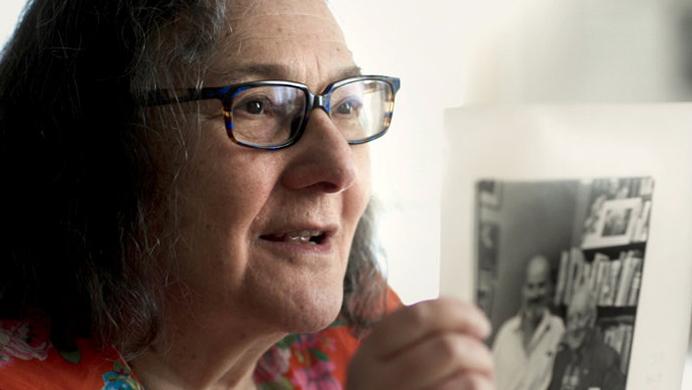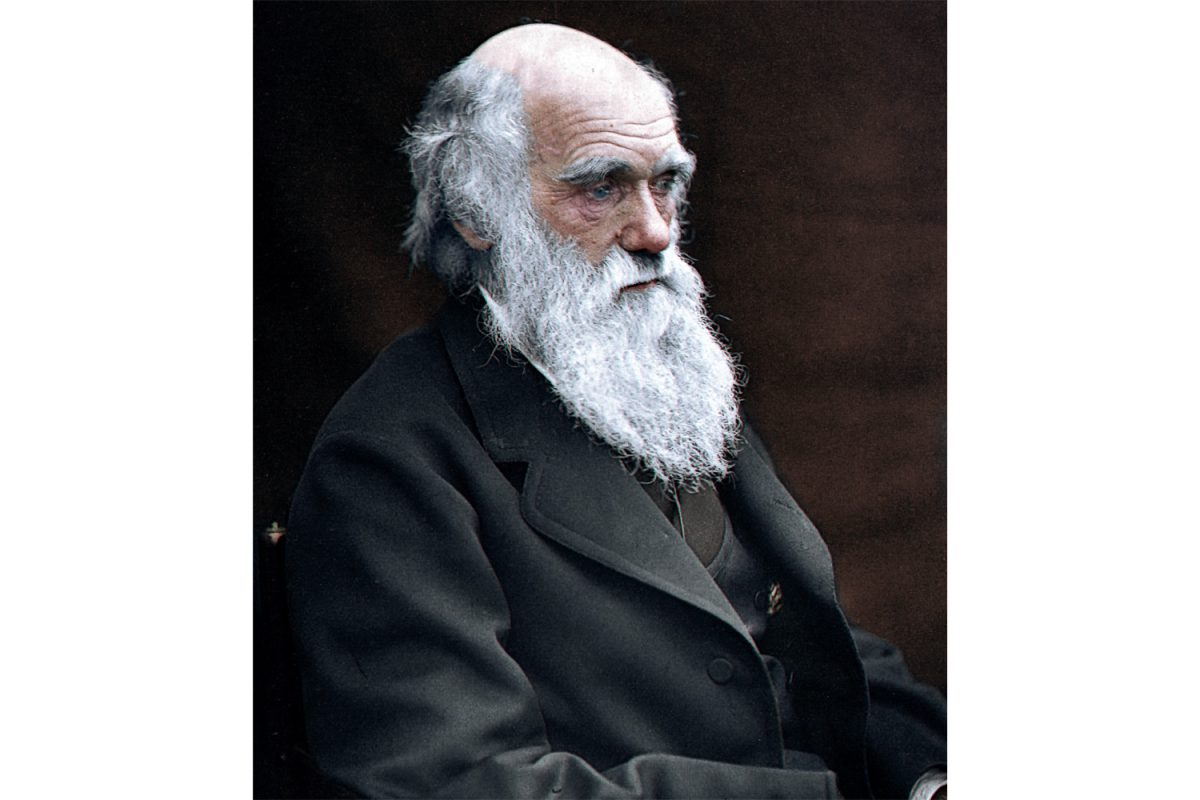The B-Side: Elsa Dorfman’s Portrait Photography offers a look at the passionate and unique world of old-school photography.
By Irene Enlow
Directed by documentarian Errol Morris, The B-Side: Elsa Dorfman’s Portrait Photography offers its own portrait of a woman who has devoted a great deal of her life to capturing the lives of others through photography.
Dorfman’s photographic career has been going strong since 1980, and her portraits feature people of all walks of life, including literary and artistic celebrities, family members, and those of no particular importance who simply wished to capture a moment in their lives. With her own life beginning to wind down, the photographer tells her story as she walks Morris, and ultimately audiences, through a sampling of her archived photos.
Her story is one of talent, determination, and strength of character — she highlights her struggles to grow as an artist in a world in which women were often expected to find fulfilment through marriage and family. And while Dorfman is unassuming, and easily underestimated, even in a film focusing on her, as we learn more about her and her past, we come to know she is a fierce, persistent artist with a great understanding, both of herself and of the people she
photographs.
Even as Dorfman’s photography showcases others more often than not (although she does dabble in self portraiture — which quietly highlights some of her feminist ideals), her life and experience are closely woven into her art. Dorfman’s relationships and view of the world often become part of her artistic expression, and her vibrant personality radiates through her pictures, even when she is out of the frame.
If the film is a celebration of Dorfman, it is also a tribute to her trusty tool — the camera, specifically a large-scale Polaroid, which, when she discovered it, opened up opportunities for artistry and rich life experiences that Dorfman had struggled to find previously. The cinematographic memorial to photographic art, and the mind behind it, is a touching way to honor craftsmanship — especially in a craft that is evolving so quickly. Its roots are threatened to be unceremoniously buried under flashing iPhone cameras and pristine digitally touched-up images.
RELATED: Shadows & light of the everyday people
For those who enjoy the technicalities of photography, this film is for them. The film is very much focused on the cameras behind the photos we see — cameras most of which have long since been retired and discontinued. For the most part, the film focuses on technology rather than people — Dorfman spent much of her life interacting with notable figures, but she prefers to discuss the instruments and skill that went into capturing them, rather than her experiences with meeting them. It’s a refreshing attitude in a time in which we are often deluged with celebrity worship. It is easy to bolster the legacies of the famous, but Morris quietly chooses to focus on the instruments and artistry that helped to cement those very legacies.
Overall, the film offers an intimate look at the life and work of an artist and is sure to illuminate and inspire people.













